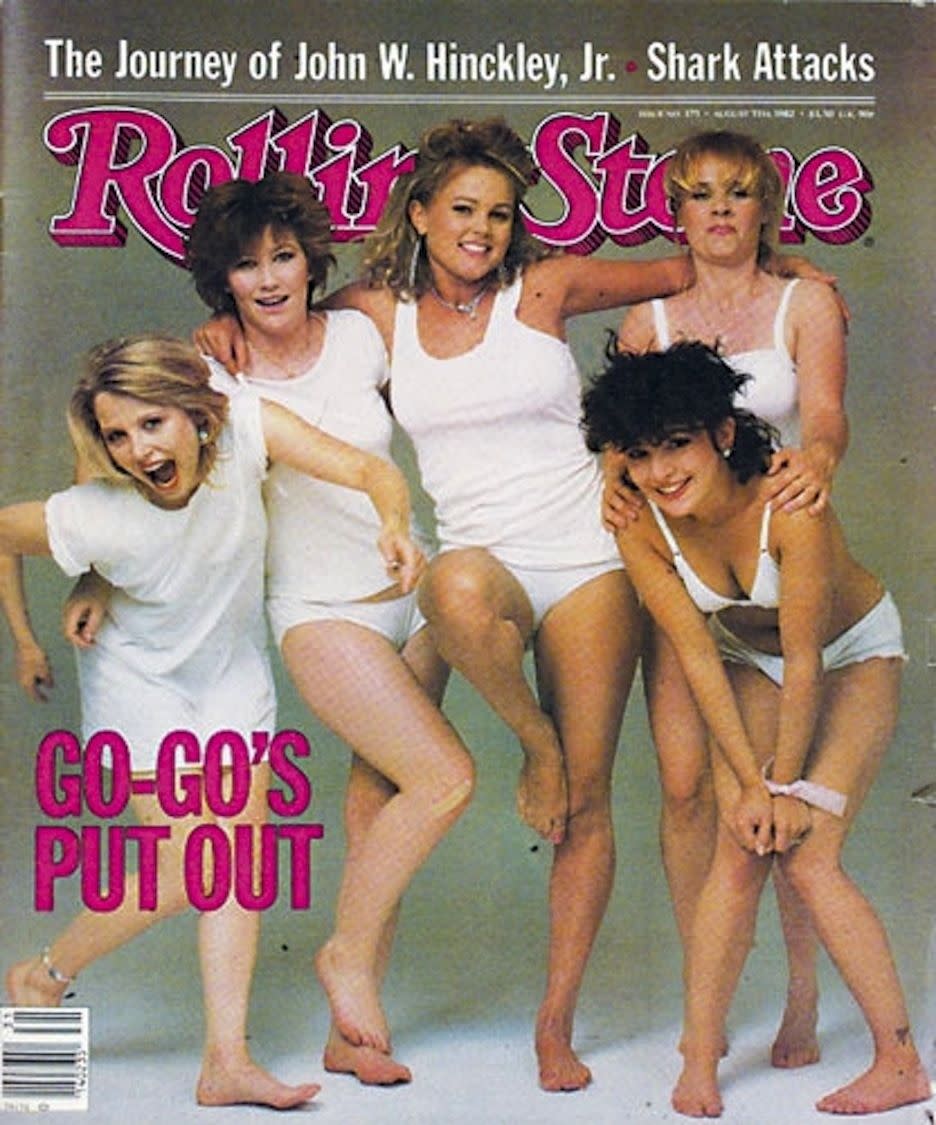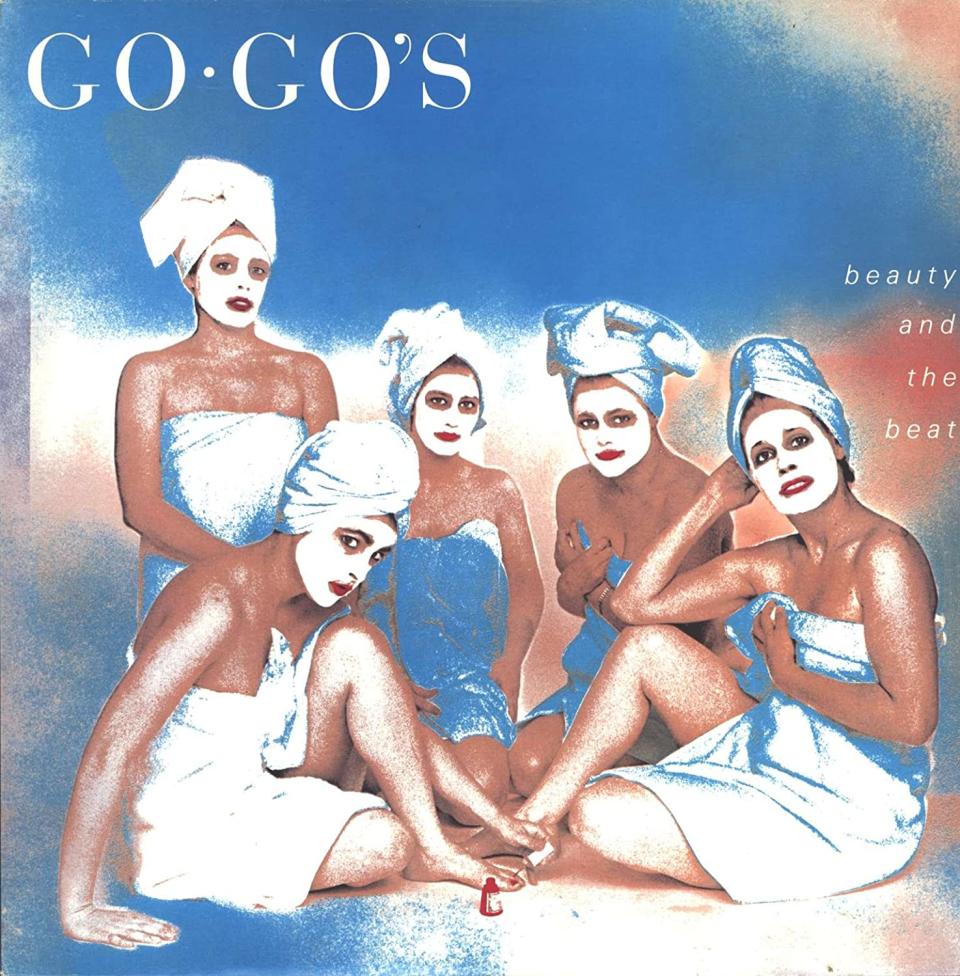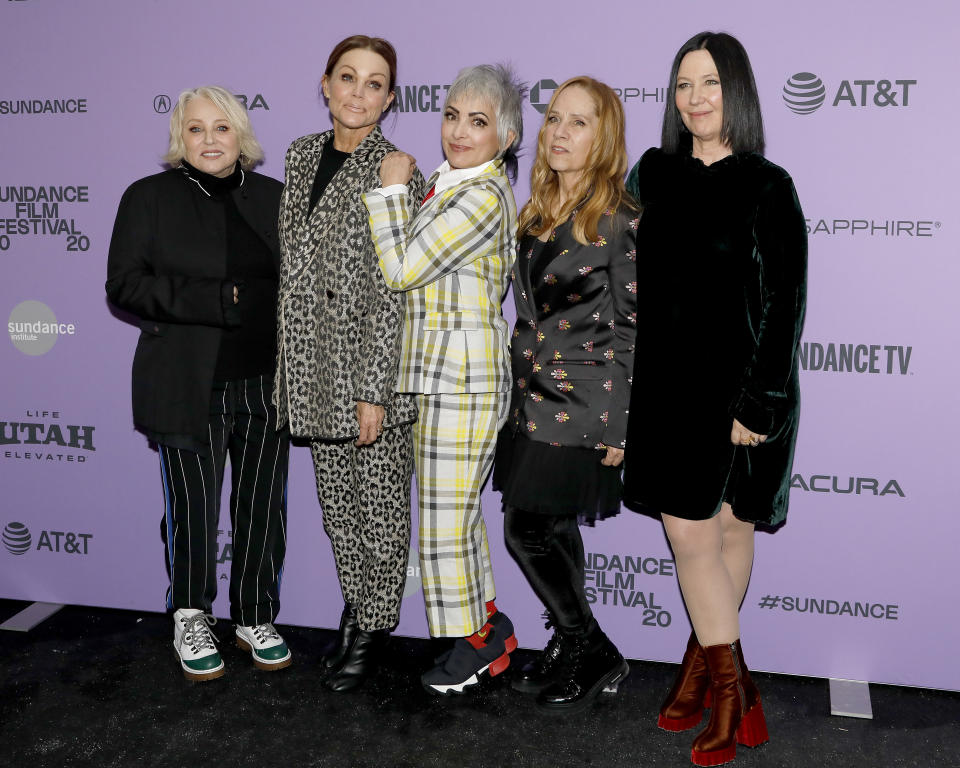The Go-Go's' Kathy Valentine talks infamous Rolling Stone cover, 'Beauty' secrets, and why they're not in the Rock Hall
In March 1982, new wave legends the Go-Go’s’ debut LP, Beauty and the Beat, topped the Billboard 200 album chart, making them the first — and, to date only — all-female band that wrote their own songs and played their own instruments to achieve that feat. The album remained at No. 1 for six consecutive weeks, went double-platinum, and yielded the No. 2 single “We Got the Beat.” It was a dream come true for bassist Kathy Valentine, who’d wanted to be a rock star ever since she was a little girl and saw Suzi Quatro on TV. (“The ground split open, and everything made sense to me,” she says of that eureka moment.)
Five months later, Valentine and her bandmates had the chance to fulfill another rock ‘n’ roll fantasy and pose for the cover of Rolling Stone. But the sexism they’d experienced in their early days — when no major label would take a chance on signing them, even though they were playing sold-out shows in their native Los Angeles — marred what should have be a career triumph.
“We were really bothered by the Rolling Stone cover,” Valentine, who just released her raw and gritty memoir, All I Ever Wanted, tells Yahoo Entertainment/SiriusXM Volume. She recalls when the Go-Go’s showed up to a Manhattan loft for their shoot with renowned photographer Annie Liebowitz — wearing outfits they’d chosen for themselves — they were initially elated. “[Liebowitz] is an icon. Rolling Stone is an icon. These things are iconic. These are the things you've looked up to since you were 12 years old,” says Valentine. But then Liebowitz’s assistant walked in with bags of Hanes underwear, which the Go-Go’s learned would be their “wardrobe” for the photo session.

The Go-Go’s resisted at first, when Liebowitz urged them to “just try it” and put on the tighty-whiteys. But after a lot of arguing back and forth, they ultimately relented, feeling pressured and intimidated — and justifying to themselves that at least they only had to don plain white cotton undies, as opposed to sexy lace lingerie.
“All of a sudden we get to be on the cover of Rolling Stone, and we're being shot by this legend,” Valentine recalls. “So, you kind of go with it. … We respected [Liebowitz] a lot and we were thrilled to be in a shoot for with her. It's weird — you kind of do what you're told sometimes. It just depends in the moment. And especially when there's five people there, one person can still be grumbling and moaning and bitching about something, but they have to pipe down if everybody else is going along with the plan.”
Some fans might be surprised to learn that this infamous cover — part of a long, problematic tradition of Rolling Stone having its female cover subjects pose in various dates of undress — was captured by a woman, not through the leering lens of a leering male photographer. But Valentine says it wasn’t the underwear that really upset the band in the end. It was the magazine’s snarky, degrading declaration: “Go-Go’s Put Out.”
“[Liebowitz] is such a visionary and such an artist; I'm sure [she had] some creative statement. It could have been a spin on ‘They’re such wholesome girls!’” says Valentine. “But I think what rubs salt in that was the ‘Go-Go’s Put Out’ headline — almost a commentary like, ‘Oh, the wholesome girls, look at them, they're not sexy-underwear-posing, it’s like they're at a slumber party!’ That might've been the message, but when you say the Go-Go's ‘put out,’ that was unmistakably a dig.”

The Go-Go’s did make Rolling Stone’s cover a second time, in July 1984, and for that shoot, they got to keep their clothes on. Valentine was pleased with that image, in which the band came across as “fierce and empowered.” But she only recently realized that that cover also boasted a sexual double-entendre headline: “Women on Top.” Says Valentine incredulously, “I just looked at it today! I never even thought that, [because] I was so happy with the photo. I never thought of that. Jesus.”
The Go-Go’s struggled with that good girl/bad girl dichotomy throughout the early days of their career: The media consistently depicted them as innocent girls-next-door types, when in fact they were notorious veterans of the first-wave L.A. punk scene who could party just as hard as their debauched male peers. (Valentine had a particularly reckless adolescence: She learned to play guitar from her mom’s bad-influence boyfriend, a “heroin addict, drug dealer, prison escapee.”)
“I think what happened was, as we got more successful, there was just these archetypes that women are often slotted into: the virgin, the whore, the girl next door. There’s these little boxes,” says Valentine. “And I think [girls next door] was the easiest [category], because we weren't acting ‘slutty.’ We weren't wearing real suggestive clothes. We weren't, like, going out there, being revealing or sexual. We weren't sexualized at all. So, I think because we weren't sexual, that meant we were ‘good girls,’ you know?”
The real Go-Go’s were of course more complex, and they were always better off when they took control of their own narrative and image — like when they flipped gender roles and dressed up in male drag for their “Turn to You” music video (“I think me and [lead singer] Belinda [Carlisle] made the best guys,” Valentine chuckles), or when they styled themselves for their undoubtedly most famous photo shoot, for the Beauty and the Beat album.
A perfectly on-brand depiction of budget glamour, the 1981 Beauty and the Beat back cover, shot by art director George DuBois, had the five girly Go-Go’s reclining in bubble-filled bathtubs at New York City’s Wellington Hotel — scarfing bon-bons, reading pulp fiction novels, gabbing on princess phones, and in Valentine’s case, swilling champagne-for-one. DuBois’s iconic front cover image featured the women in cheap-and-cheerful self-care/home-spa mode, wearing Pond’s cold cream face masks and borrowed linens. The Go-Go’s may have been showing a bit of skin, but in this case, in was on their own terms.

“Our manager got the towels from Macy's and took them back the next day, because they were too expensive,” Valentine laughs. “We tried a lot of face products before we got it right. Like, some of them would sting, and some of them would start cracking. I've got outtake photos that are funny because they're just all cracked up. It looks terrible! And there wasn't really a way to digitally fix that stuff back then. So, it was trial-and-error. We used cold cream because it didn't crack and it didn't turn clear and icky.”
It seems like those outtake photos — or those Macy’s towels, if they could ever be retrieved — belong in Cleveland’s Rock & Roll Hall of Fame museum. But despite the Go-Go’s establishing a still-unbroken Billboard chart record almost 40 years ago, they’ve gotten surprisingly short shrift historically. And incredibly, they’ve never even been nominated for the actual Rock & Roll Hall of Fame.

“There will be some ‘Women Who Rock’ exhibit, and we won't even get in that. I've seen ‘Women Who Rock’ exhibits and there's nothing. OK, all right,” Valentine says with a shrug. “Sometimes it bothers me, sometimes it doesn't. … One argument somebody always makes [as to why the Go-Go’s have been snubbed by the Hall] is that we only had three albums in our four- or five-year arc of when we were the biggest. But then I think, how many albums did the Sex Pistols have? How many albums did the Stooges have? ... That's a drag.”
But now it seems that the Go-Go’s are finally getting their due. Following the recent release of Valentine’s critically heralded All I Ever Wanted, the success of the band’s jukebox musical Head Over Heels, and the Go-Go’s’ forthcoming self-titled documentary (which premiered at this year’s Sundance Festival), they’re even reaching a new generation as “We Got the Beat” soundtracks a key musical number in the Valley Girl movie reboot out next month.
“I really like the people that are running the Rock Hall now, and I know that they're advocating for us,” says Valentine. “I think it's a matter of time.”
The above interview is taken from Kathy Valentine’s appearance on the SiriusXM show “Volume West.” Audio of this conversation is available on demand via the SiriusXM app.
Read more from Yahoo Entertainment:
Salt-N-Pepa on their very necessary legacy: ‘We were always underestimated in the industry’
Margaret Cho opens up about how the Go-Go’s changed her life
Suzi Quatro talks Rock & Roll Hall of Fame snub: 'It's just plain stupid'
Josie Cotton talks lost 1986 album, 'Valley Girl,' and getting asked out by Nicolas Cage
Cherie Curie speaks out against Suzi Quatro’s Rock & Roll Hall of Fame snub
Follow Lyndsey on Facebook, Twitter, Instagram, Amazon and Spotify.


